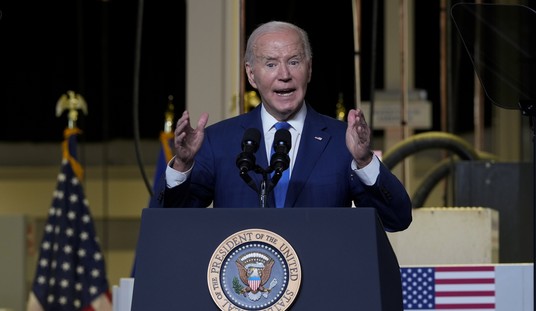Almost precisely at the midpoint between the Iowa caucuses on Jan. 3 and the general election on Nov. 4, the general election campaign is on. Neither party's nominee swept the primaries. John McCain's narrow popular vote margins in New Hampshire, South Carolina, Florida and most of the Super Tuesday states, combined with the Republicans' winner-take-all delegate allocation rules, effectively gave him the Republican nomination on Feb. 6. Mike Huckabee made it official by withdrawing after the March 4 Texas and Ohio primaries.
Barack Obama's big delegate margins in caucus states, combined with Democrats' proportionate representation rules, gave him what proved to be an insurmountable lead in February, when he won 11 straight contests. Hillary Clinton carried the popular vote (unless you allocate all the "uncommitted" votes in Michigan to Obama), but could not overtake Obama's delegate lead. The super-delegates gave Obama a delegate majority by the evening of the last primaries on June 3. It took Clinton another 24 hours to decide to end her candidacy, after it became clear that Obama wouldn't be stampeded into making her his vice presidential nominee.
So who's going to win? In a parliamentary system, the answer would be easy: Obama. Voters prefer Democrats to Republicans generically. In Senate races, Democrats could conceivably gain 10 seats, and a theoretically veto-proof majority, if all the possibly close races go their way. In the House, Democrats' three special election victories in seats that, based on their performance in the 1996-2004 period, were safely Republican suggest that they could make similarly impressive gains. In no seat do the Republicans seem incapable of losing.
On the presidency, it's a different story. The most recent polls collected by realclearpolitics.com show Obama leading McCain by an average of 47 percent to 45 percent. That's just about the same as Obama's average lead of 47 percent to 44 percent in the 43 national polls taken since ABC and Fox News aired the Rev. Jeremiah Wright tapes on March 13 and a little less than his average lead of 48 percent to 43 percent in the 15 national polls taken after Super Tuesday and before March 13.
Recommended
But the popular vote is one thing and the electoral vote, as we learned eight years ago, may be another. In all the statewide public polls taken in February, March, April and May, McCain leads Obama in 29 states with 281 electoral votes and Obama leads McCain in 21 states with 254 electoral votes (add 3 more for the District of Columbia, which nobody bothered to poll).
To be sure, both candidates lead by only a narrow margin in some states, and the numbers in some states may be skewed by polls that were just plain wrong. And enough states are close -- carried by a candidate by 7 percent of the vote or less -- to suggest that we are headed to an election as close as 2000 and 2004.
But it's not going to be on the same battlegrounds. McCain has narrow leads in some familiar target states -- Michigan, Missouri, New Hampshire and Ohio. But he also leads narrowly in states that were not on the target lists last time -- Alaska, Montana, North Carolina, Virginia and (!) Texas. Obama has narrow leads in some familiar target states -- Nevada, New Mexico, Pennsylvania and Wisconsin. But also in some states not on 2000 or 2004 target lists -- Colorado, New Jersey and (!) Massachusetts.
Moreover, some states that were prime targets in 2000 and 2004 may not be this time. McCain leads by 8 percent in Florida and by 18 percent in West Virginia -- until 2000 considered safely Democratic. Obama leads by 8 percent to 10 percent in Minnesota, Oregon and Wisconsin. As I counseled some months ago, it's time to throw out that old map of the red states and blue states. There are more states -- and some different states -- in play this time.
It may be time, too, to throw out the old rule that says that economic distress moves voters toward Democrats. McCain is maintaining or improving on George W. Bush's performance in Michigan, which has the nation's highest unemployment rate, and in economically ailing Ohio. Obama is running significantly better than John Kerry or Al Gore in economically vibrant Virginia and North Carolina.
In these changes on the political map you can see reflections of the tribal warfare in the Democratic primaries. Obama clearly underperforms the potential Democratic vote among older, downscale, Latino, Jewish and Appalachian voters. Whether that will remain the case is uncertain. But right now, at midpoint, this looks like a presidential race unlike any other.
























Join the conversation as a VIP Member